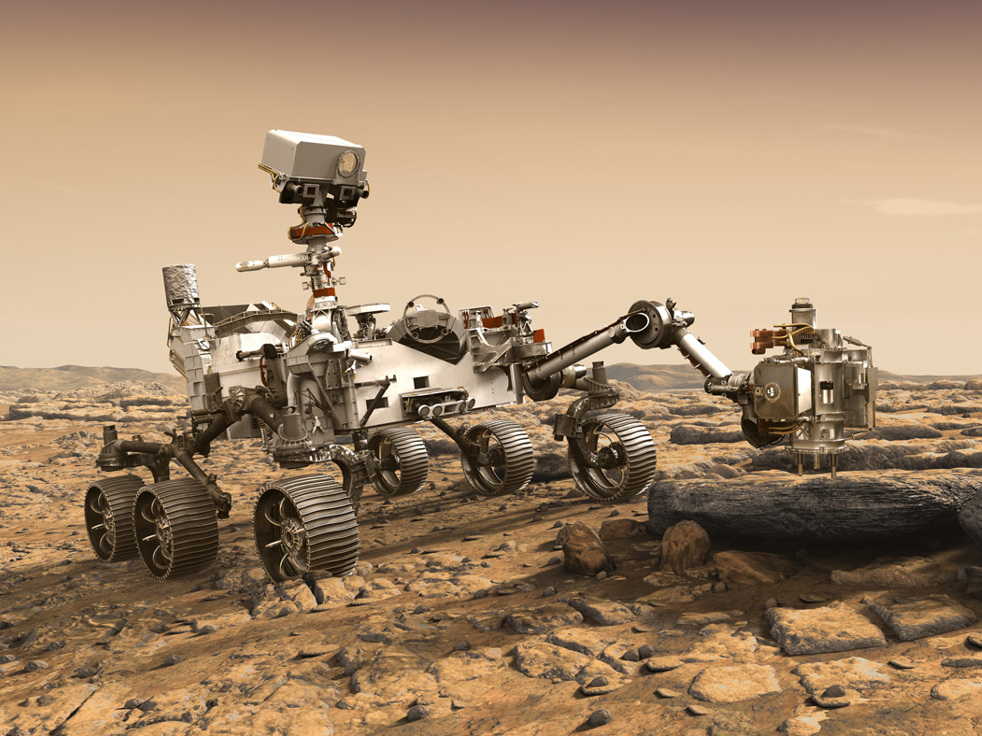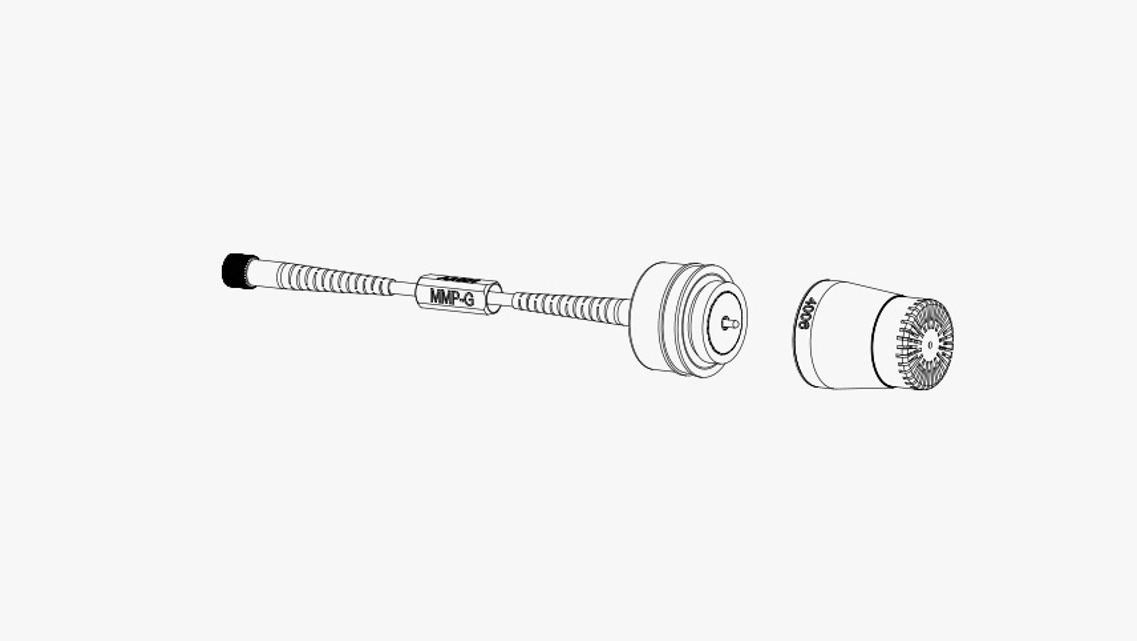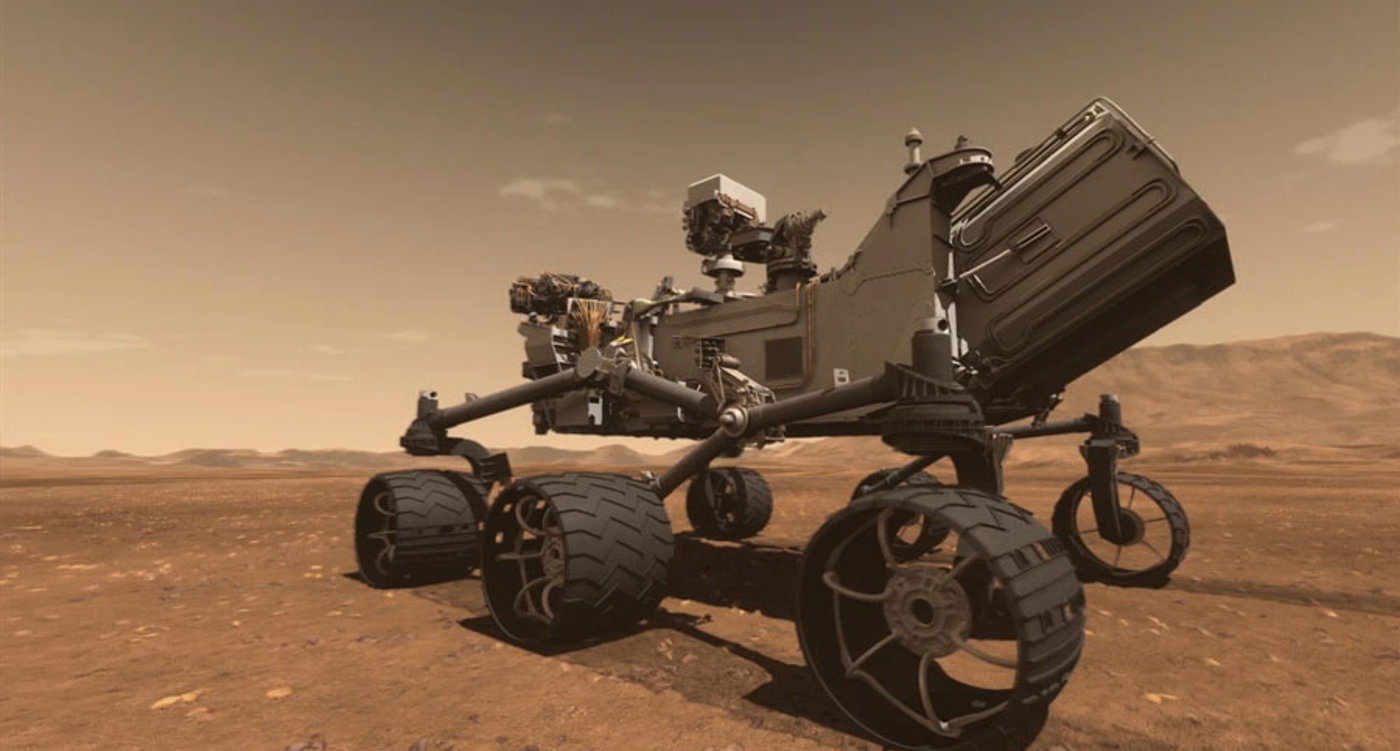Hear the sound of Martian wind
Until recently, no one had ever heard anything from within the Martian atmosphere. In fact, the first sounds were only heard on December 1, 2018. A highly-sensitive seismometer on board NASA's InSight Mars Lander recorded vibrations caused by Martian wind. In addition, the vehicle's air pressure sensor also recorded the sound of wind. The sounds were picked up by instruments made for other purposes than sound thus the recordings are analogies to what you could expect to hear.
To gain some further insights into the Martian soundscape, the Mars 2020 Rover will be outfitted with audio equipment from DPA Microphones. Just imagine the range of sounds that a dedicated microphone could record during the trip – leaving outer space, entering the atmosphere and, eventually, on the planet's surface.
What DPA equipment is making the trip?
For this partnership, NASA has strenuously tested a variety of mics and chosen a selection of equipment from DPA. The 4006 Omnidirectional Microphones will be the Rover's "ears"; attached to the vehicle and paired with MMP-G Modular Active Cables, which will act as ultra-transparent preamplifiers. Inside the body of the vehicle, acting as the auditory part of the "brain", will be a MMA-A Digital Audio Interface. The MMA-A's job is to digitalize the audio in the highest quality and send it to a computer in the Rover through a USB connection.
The trip to Mars is not a simple walk in the park. It will subject the Rover to extreme temperatures (as low as -100°C/ -148°F), wildly varying travel pressure and intense vibrations. To ensure that the equipment lands on Mars in good working order, the spacecraft design team has created a specialized enclosure to mount the MMA-A interface inside the rover chassis. In addition, NASA's Jet Propulsion Laboratory (JPL) and the DPA R&D team worked together to create a custom MMP-G amplifier housing to bolt onto the exterior of the Rover.
Besides the customized amplifier housing, no major changes were made to the equipment once it left the DPA factory. The mic you know and love, the one that captures your favorite orchestra arrangement or records ambient sound for your favorite TV series is the same as the one that will take the long trip to Mars.
What will the mics be used for?
One of the riskiest parts of the mission, entry, descent and landing (EDL) tracks the Mars 2020 Rover from the time it enters the atmosphere until touchdown in the Martian dust. No one has ever seen or heard a parachute opening in the Martian atmosphere, the rover being lowered down to the surface of Mars on a tether from its descent stage, the bridle between the two being cut or the descent stage flying away after the Rover lands!
The DPA microphones' mission is to capture these sounds for NASA. Not only will this allow project engineers and scientists to hear the fascinating sounds of the Rover descending, but the curious public will be able to follow along as well.


